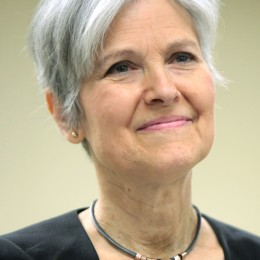Christianity and Social Media
by Ethan Rose
Without a doubt, social media has become an integral part of our culture. But, as with all cultural artifacts, there are good and bad consequences involved with the use of social media. It falls to those of us who desire to faithfully follow Christ to discern whether social media aids or hinders us in being disciples of Jesus.
Social media has many benefits. We can connect at unprecedented levels. Someone living in China can instantly connect with me here in the U.S. It also allows old friends to reconnect. Not only can we connect with others, but we can share and build community across great distances. If I post a picture on Instagram, my friends can see what is going on in my day. Later, we can talk about it over coffee, which further builds intimacy and community. We can’t list all of the benefits of social media, but we can see that there are good reasons to use it.
There are, however, also drawbacks to social media. While there is no biblical prohibition for social media, and any attempt to implant one in the text is anachronistic and bad hermeneutics, Scripture does deal with what it means to be human. With the biblical perspective on humanity in mind, we may be able to answer the question of whether or not social media aligns with it, as cultural artifacts, such as Holy Scripture and social media, intrinsically say something about what it means to be human.
We know from Scripture that we are made in God’s image and pronounced to be “very good” (Gen. 1:31 ,ESV). But we rebelled against God and fell into sin and death. The entire Old Testament is the story of God calling humanity back to Him through a peculiar people. In the New Testament, the culmination of God’s plan to redeem us is the Incarnation, Death, Resurrection and Ascension of Jesus Christ. God’s calling of a peculiar people, out of sin and death, is displayed in the Church and its mission to “Go therefore and make disciples of all nations” (Matt. 28:18, ESV). As members of Christ’s Body, we are “a new creation” (2 Cor. 5:17, ESV) and must “not be conformed to this world, but be transformed by the renewal of [our minds]” (Rom. 12:2, ESV). We are about the business of making disciples and being transformed by the Holy Spirit. Christian philosopher James K.A. Smith says that discipleship and formation “are a matter of developing a Christian know-how that intuitively ‘understands’ the world in the light of the fullness of the gospel.” Discipleship is placing ourselves into contexts and practices that constantly make us more like Christ.
So what does this have to do with social media? If there is a way to be shaped more like Christ, there is a way to be shaped less like Him. Smith writes on culture: “While cultural institutions are essentially human creations, there is also an important sense in which humans are the products of the formation we receive through cultural institutions.” That is, since social media is a cultural institution, we are shaped and formed its the practices and ethos. So then does social media shape us more or less into Christ’s image? It could be that “both Facebook and Twitter can seem to foster habits of self-display that closely resemble the vice of vainglory. Or at the very least, they amplify the self-consciousness and ironic distance that characterizes late modern capitalism—to a debilitating degree.” Social media has the tendency to make us focus on ourselves, to put ourselves on display for all to see and construct an artificial edifice of ourselves in order to gain acceptance. How, then, can we go out and make disciples of Christ if we are constantly focused on ourselves? How can we be transformed by the Holy Spirit if we aren’t honest with ourselves?
I’m not suggesting social media is evil and we should deactivate our accounts. The question is not “Should Christians use social media?” but rather, “How should Christians use social media?” Are our practices on Facebook in keeping with the Kingdom of God? Is the amount of time we spend on Twitter indicative of what it means to follow Christ who loves God and neighbor? Are we too busy, with our phones, checking Snapchat, to see those sitting right next to us? As a people concerned with pursuing the good, the true, and the beautiful—that is, the Triune God—we should only use social media to the extent that it aids us in that pursuit, rather than creating an idol that draws us away from Christ. We should passionately pursue God in community through social media, but ardently oppose the idolatry of the self. The Church is the light in the darkness, calling everyone to the Source of all life by becoming more like Christ. And this transformation only takes place in community and worship. As Smith says, “If the rituals of social media…are involutional, the practices of Christian worship are fundamentally ecstatic—calling us out of ourselves and into the life of the Triune God, no to “lose” ourselves, but to be found in Him.” May we love God and neighbor while using social media, may we point others to Christ and may our lives reflect the glory of God breaking into Creation, making all things new.
Sources: James K.A. Smith, “Desiring the Kingdom,” “Imagining the Kingdom”
Christianity and Film
by Jared Maier
The power of Christ’s love is worthy of sharing, and one of the ways we can share it is through stories that reflect Christ’ teachings. Stories can be shared through countless forms of media, but one of my favorite ways to tell a story is through the art of cinema.
Christianity has been present in films since the first blockbusters. Films have been created from the inspiration of events from the New Testament, such as “The Nativity Story” (2006). There have been films centered around the life of Jesus, which include the beautiful claymation “The Miracle Maker” (2000) and the worldly acclaimed “The Passion of the Christ” (2004). There are even films depicting the New Testament verbatim, such as “The Visual Bible: The Gospel of John” (2003).
Christianity has taken on a new form in today’s theatres. It has become a demographic with the phrase “Christian movie” becoming a description of genre rather than a description of the values portrayed in the film. Production companies such as Pure Flix rely heavily on this newly created marketable audience. According to BoxOfficeMojo.com, “God’s Not Dead” (2014), Pure Flix’s most famous and financially successful movie, grossed $60,755,732 domestically, beating its most recent Christian film competitor, “Soul Surfer” (2011) by over $20 million One main reason “God’s Not Dead” was successful at the box office is it found a niche market in the Christian church community. Pure Flix advertised it to youth pastors to take their teens to see it for discounted tickets, sent sermon series to churches leading up to the movie’s release and kept the public constantly informed about the movie through various social media platforms. This, in combination with the movie featuring Willie Robertson from “Duck Dynasty” and The Newsboys, makes it no wonder “God’s Not Dead” was able to attract a large audience.
This is not to say all films with Christian aspects and messages are created for the purpose of reaching a market. There are films out there that have been created as visual sermons, films that can tell a moral, religious or faith-centered that would not be as easily communicated from a pastor in a pulpit. This collection of films mainly includes those produced by the Kendrick Brothers company Sherwood Pictures and production company Affirm Films. The Kendrick brothers first film, “Flywheel” (2003), was made on a small $20,000 budget, and the cast and crew were made up of members of the church and local community. Flywheel tells the story of a scamming used car salesman who has a turning point in his life, commits himself to the Lord and re-centers his business around honoring and serving God and others. In its essence this film is a sermon about the power of faith, letting go of our pride and selfish ways, and living the life Jesus has called us to live. Sherwood Pictures maintained this focus on the importance of faith and the power of Jesus Christ in their following films, including “Facing the Giants” (2006) and “Courageous” (2011). Affirm Films’ “Faith Like Potatoes” (2006) follows a similar storyline about a farmer in Africa who asks God to take control of his life, but unlike Sherwood Pictures’ films the farmer does not make a complete 180 in his faith. The film instead focuses on the slow transformation in his life and how his faith in God’s love helps him get through the struggles and tragedies he will always face, whether he is a Christian or not. Affirm Films has also produced other faith-based movies, such as the previously named “Soul Surfer” and “To Save a Life” (2009).
Aspects of Christianity and Christian beliefs are not just present in “Christian” movies. Hundreds of movies considered by a majority of Christians to be “secular” feature elements of Christianity. In “The 33” (2015) 33 gold miners in Chile end up trapped underground for 69 days. One of the miners is referred to as “the priest,” and he continually prays for the well-being of the miners and himself. At the end of the film when all the miners are saved the words “God was with us” are inscribed on the wall of their shelter. “Indiana Jones and the Last Crusade” (1989) is about the search for the Holy Grail, and throughout the adventure references are made to Jesus’ last supper and crucifixion. There is even a moment where Indiana Jones’ father, played by Sean Connery, rebukes his son for taking the Lord’s name in vain. Jamin Winans’ independent production “Ink” (2009) subtly addresses the concept of spiritual warfare by representing Angels as Storytellers, those who give good dreams, and Demons as Incubi, those who give nightmares, with its title character being a weary soul who is neither. “Ink” even features a female Jesus character and a Satan. The film features elements of redemption and highlights a life-changing turning point in the main character, which parallels the concepts shown in most visual sermon films.
The portrayal of Christianity through the art of cinema is not limited to one type of movie or genre. It is not as one-sided as a playing card or as opposingly double-sided as a coin. There are films that proclaim the good news of God’s grace subtly, and there are others that scream it to Heaven loudly and proudly. Different styles will attract different audiences, and no one will find the same amount of joy in every style. Families brought together to watch a Dove Foundation-awarded classic may not also spend an outing watching the PG-13 movie “Risen” (2016).
Every audience is different, and every film is different. Learning to appreciate these differences is important as these differences reflect the way Jesus’s message reached many unique lives. Jesus spoke to the masses, with a message of good news for everyone. Jesus said, “Everyone who hears these words of mine and puts them into practice is like a wise man who built his house [his life] on the rock” (Matt. 7:24, NIV). He never said there was only one way people could hear His words, and he never said only certain audiences were allowed to build their lives on the rock.
Christianity and Television
by Billy Faulkner
When television first came into American society in the 1950s, it became a global phenomenon. Nobody could predict the amount of programming that was to inundate our society. We have television shows for pretty much everything now, from cooking to dancing to cleaning. We even have reality shows. But there is one topic upon which many shows fear to tread, and that is the subject of religion and Christianity. For decades, the way this subject has been treated on television has drawn the ire of many conservative groups, who feel that shows either make a mockery of religious values or gloss over them to an extent.
Starting in the early 1920s, televangelism was first heard on radios across the country. Sister Aimee Semple MacPherson was one of the most well-known evangelists. A Canadian-American Pentecostal evangelist, she used her talents to draw in and preach to the general public. She would later be portrayed in a television film by everyone’s favorite public menace, Faye Dunaway, with Bette Davis as her mother. In the 1950s and 1960s, religion and Christianity were rarely talked about on the radio and much less shown on television. You had your WASP women, with their potlucks and Bible studies, but you did not see Beaver Cleaver and Lucy Ricardo talking about their faith. Not until the mid-1970s, with groundbreaking television shows such as Norman Lear’s “Maude” and “All in the Family,” was there even one line uttered about religion. In the 1980s, televangelists made a comeback with celebrities such as Jim and Tammy-Faye Bakker, Robert Tilton and Jerry Falwell. This new brand of television was even bigger than Tammy-Faye’s hair, and depicted services with singing, dancing, preaching, calls for donations and lots of (fake) evangelistic miracles alongside Tammy-Faye’s incessant crying. Unfortunately, this would quickly die out, as Jim Bakker was convicted of tax crimes, amongst other things, and in 1993, news goddess Diane Sawyer exposed the fraudulent practices of Robert Tilton, who issued a very funny rebuttal to both her and the ABC program “Primetime” (you can find it on YouTube).
In the mid-1990s, television dramas started to depict Christianity and religion in a more positive light. Shows such as “7th Heaven,” “Everwood,” “The O.C.” and “Joan of Arcadia” (oh, how I love my sappy dramas from the early ‘00s) offered many different portrayals of religion, with moral teachings that every family could learn from, such as love and loss, alcohol awareness and even the subject of the birds and the bees.
However, the years rolled by, and the general climate towards religion began to change. Parodies of Christianity began to emerge on television. For example, the HBO vampire drama “True Blood” saw Steve and Sarah Newlin, who belonged to the Fellowship of the Sun, a Christian fundamentalist cult devoted to the extinction of vampires and other supernatural creatures. Sarah Newlin, in particular, is equal parts Tammy-Faye Baker and Pat Robertson rolled into an unhinged WASPy woman. In one of the show’s most infamous scenes, she murders a corporate executive and then sobs as she thanks Jesus. Everything she does in the show, she justifies by bringing her faith into it.
Even now, the subject of faith has arisen in our political election, such as when Donald Trump exclaimed he takes communion and reads “Two Corinthians.” But even then, it makes me wonder: How far have we come with Christianity and faith-based programming, and what does its future hold?
Christianity and News Media
by Kelsey Fiander-Carr
Religion often appears as a common theme in pop culture, from popular fictional characters on a Friday night television show praying before dinner or a work of literature alluding to the Bible. However, the most powerful representations of the tyranny and compassion of American society are in news outlets, in which religion, specifically Christianity, is often sensationalized in stories of political decisions, religious bravery and forgiveness.
American citizens often support political candidates who are seen as Christ-like or whose campaigns use the Bible as their main focus, and the news media in turn focuses on many of their religious beliefs. A common debate sensationalized in the media is whether women should have the right to get an abortion. Some politicians believe that a woman has the right to choose to terminate her pregnancy, while others believe that aborting a child is murder and a sin. Although many Christians agree with most of the policies of a politician who is pro-abortion rights, they refuse to support them because these politicians are not anti-abortion. Although not every Christian is necessarily anti-abortion, the stigma stands. Similarly, there is also the assumption that all Christians are Republicans, which is not the case.
Because of the news media, Christians can be viewed as obnoxious and wrong in some situations. Notably, in June 2015, many Americans watched as the U.S. became the 21st country to legalize same-sex marriage. Before the landmark Supreme Court decision, the union between two people of the same sex was not recognized in every state. The legalization of same-sex marriage was disputed among Christians, and many believed it was a sin for a man to lie with another man. Because of these ideals, homosexuals were often ostracized until the latter portion of the 2010s. Even on the day of the Supreme Court’s decision, the outside of the court house was filled with hateful “Christians” who held signs that read “God Hates Gays” and that a family cannot be made without one mom and one dad. Many news reports covered these peoples. While many Christians believe that homosexuality is a sin, others believe that God loves everyone, regardless of their sexual orientation.
In 1999, the story of the tragic death of Rachel Scott in the Columbine High School massacre painted a picture of the bravery and passion of a Christian. On the terrifying day in Colorado, Scott was eating with a friend outside when they were approached by two shooters. Scott was shot first. Knowing that she was a devout Christian, one shooter reportedly asked Scott if she still believed in God. Bleeding, Scott reportedly responded, “You know I do,” and Scott was killed. In response, many Christians, as well as non-religious people, praised Scott for believing in her God until her last breath. Scott was the focus of many news articles as she was the first Columbine victim and was believed to be targeted because she was a Christian. Scott’s funeral, along with the funerals of the other victims, was televised on CNN and became the most viewed service as of April 24, 1999. Scott’s sacrifice for her faith was unnerving; she was brave enough to stick with her religion until the end.
Seven years later, America stood still as they witnessed yet another gruesome school shooting. In 2006, a gunman entered an Amish one-room schoolhouse in Lancaster, Pa. Although the shooter killed himself and five young girls, the Amish community vowed to forgive him and his family for the sins he committed on the frightful day. Many Americans watched news reports that showed how a community based in love and truth found faith after tragedy. In the most shocking part of the tale, the Amish community joined the family of the gunman at his funeral; in paying their respects to his family, the community showed resilience and love. The beliefs of the Amish carried them through the worst day their community had ever seen.
Many believe that Christianity should not be brought into the view of the public through the news media because this can lead to much theological, political and social debate. However, no matter how gruesome the tale, stories of the passion and love of Christians are truly inspiring. Even non-Christians can see the importance of debating and discussing Christianity, a religion for which many have died.
Sources: anotherpartofme.com, bethinking.org, CNN




